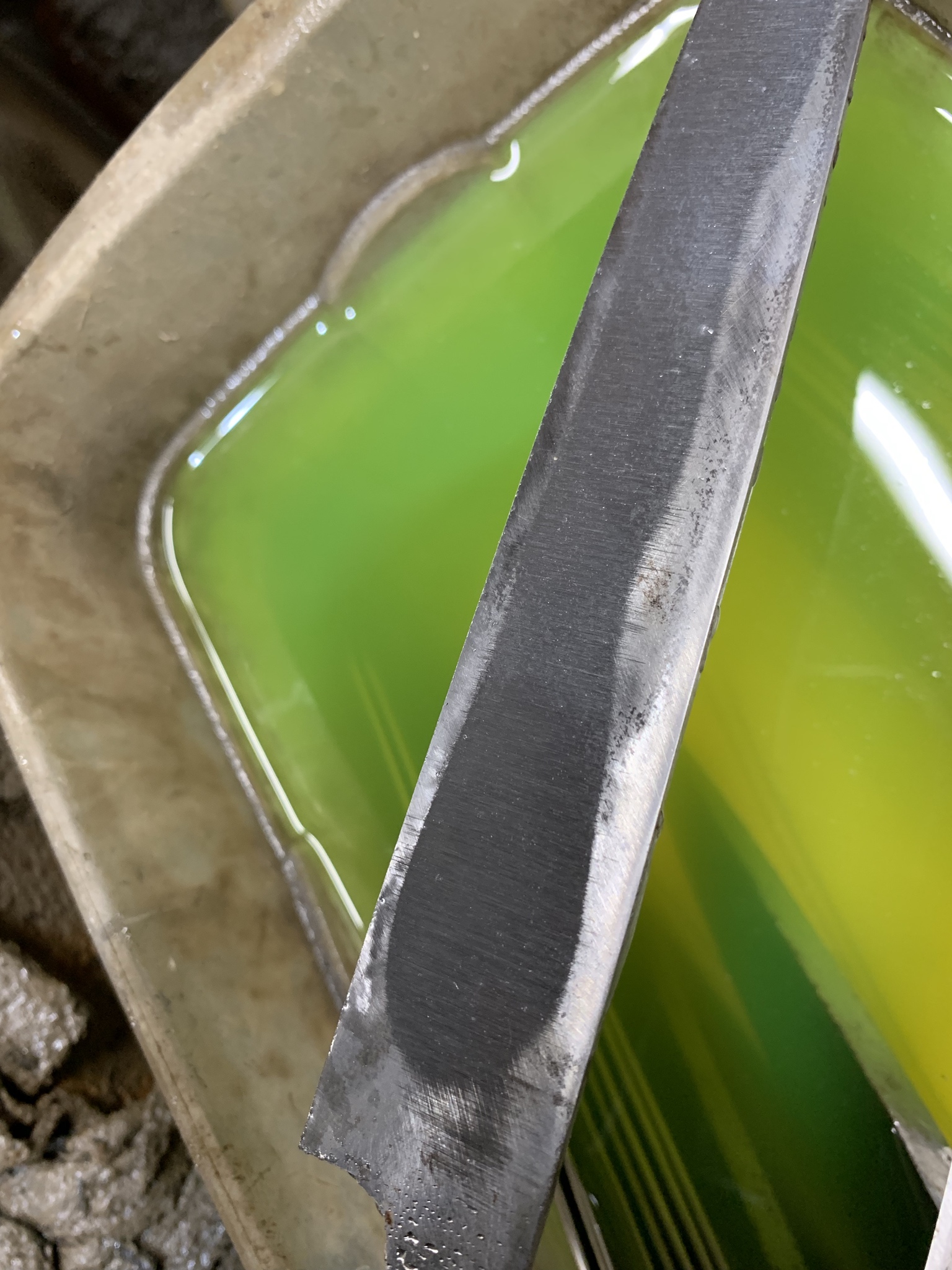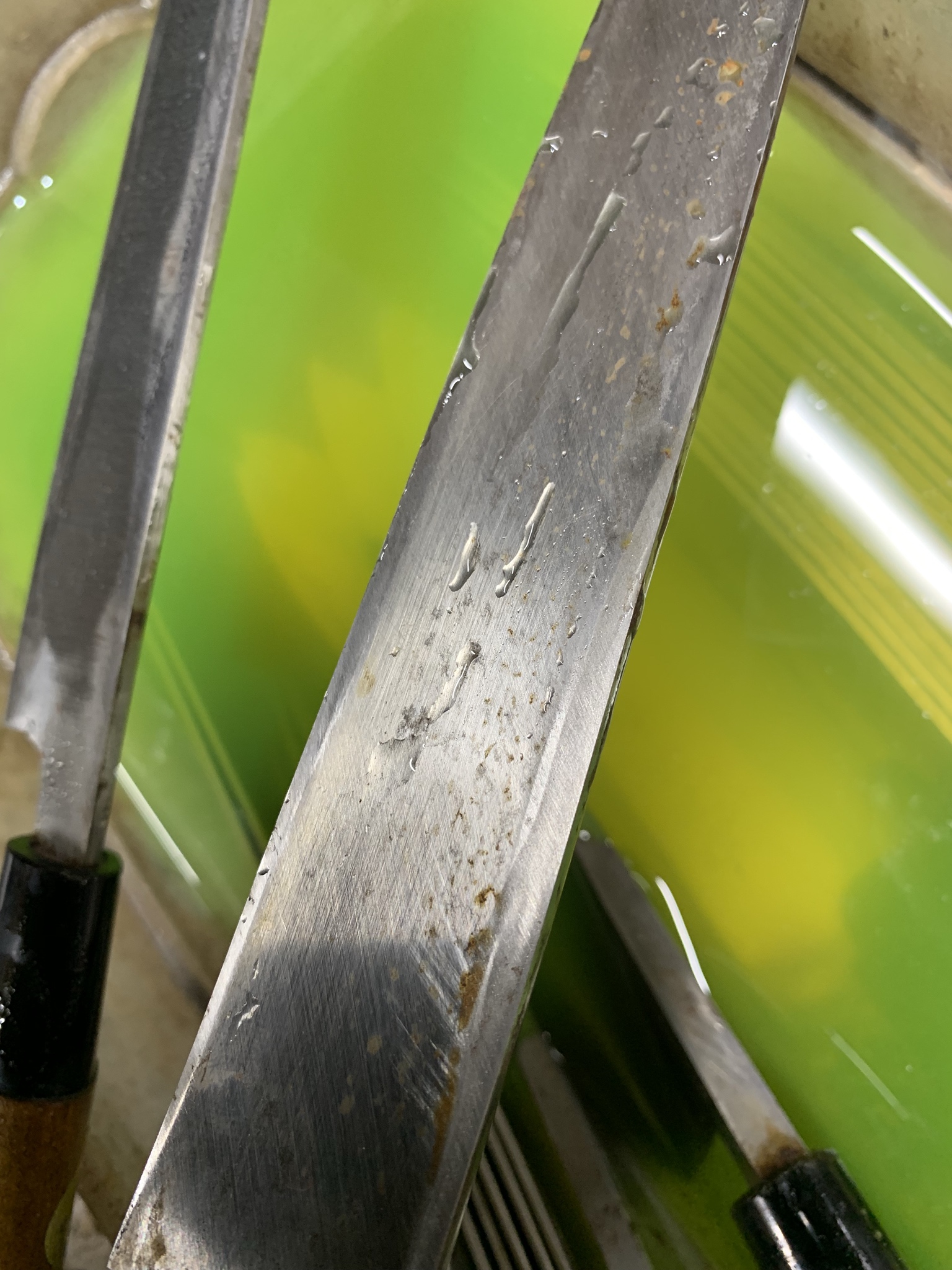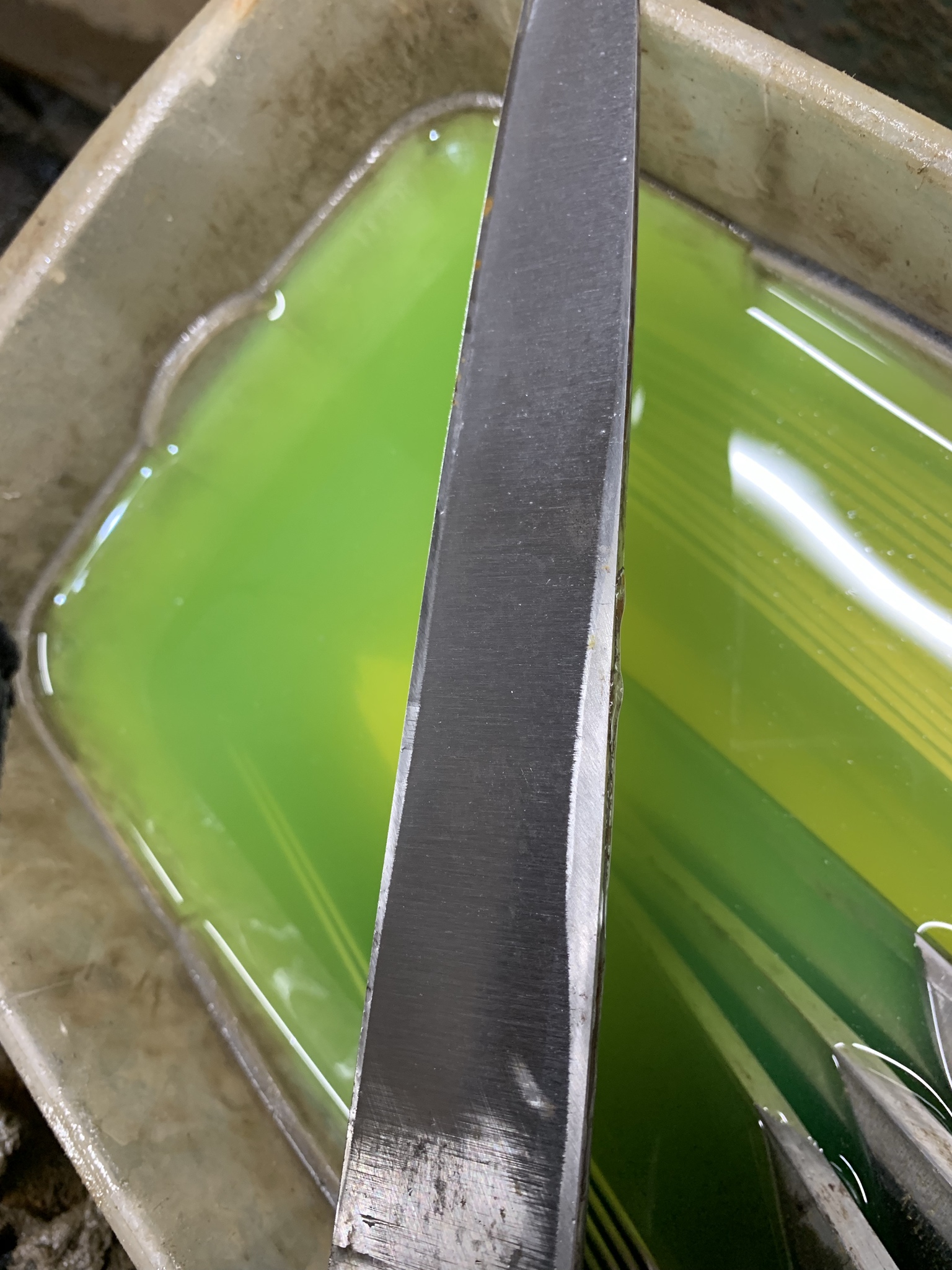Sorry forgot to write a reply.
My guess is that the young Asian guy just learned from just that one guy (the older Japanese guy). I assume he thought this was the correct way and never bothered to fix this or look out other people for advice.
How the Japanese guy learned this is hard to say. But my guess is that he went and watched an actual grinder who uses an big water wheel. These are slightly different the using whetstones.
When doing single bevel resharpening on these, you first check to make sure the core steel is coming out on the main side so you can form an edge. If not you would grind and make sure it does. If core is out, you fix the ura, which is usually rusted or over ground flat. They set the concave ura on these big water wheels as the are round not flat. By putting the ura flat on the wheel it naturally keeps that concave fixing any mistake and restoring it.
If you follow this procedure literally without taking into account the round wheel, you start grinding your back all the time. So why not always do this because this is how the pros do it, even though they aren’t using small whetstones.
Here are some pictures to maybe help illustrate.
Really overground back on a Yanagiba that I have put on the water wheel to fix. You can see it has been ground flat quite severe.
A Yanagiba that is slightly better off than the one above. Before grinding and almost finished on the back. Still some over ground flat spots that need fixing but mostly finished as I’ve already touched the edge (the import part).








